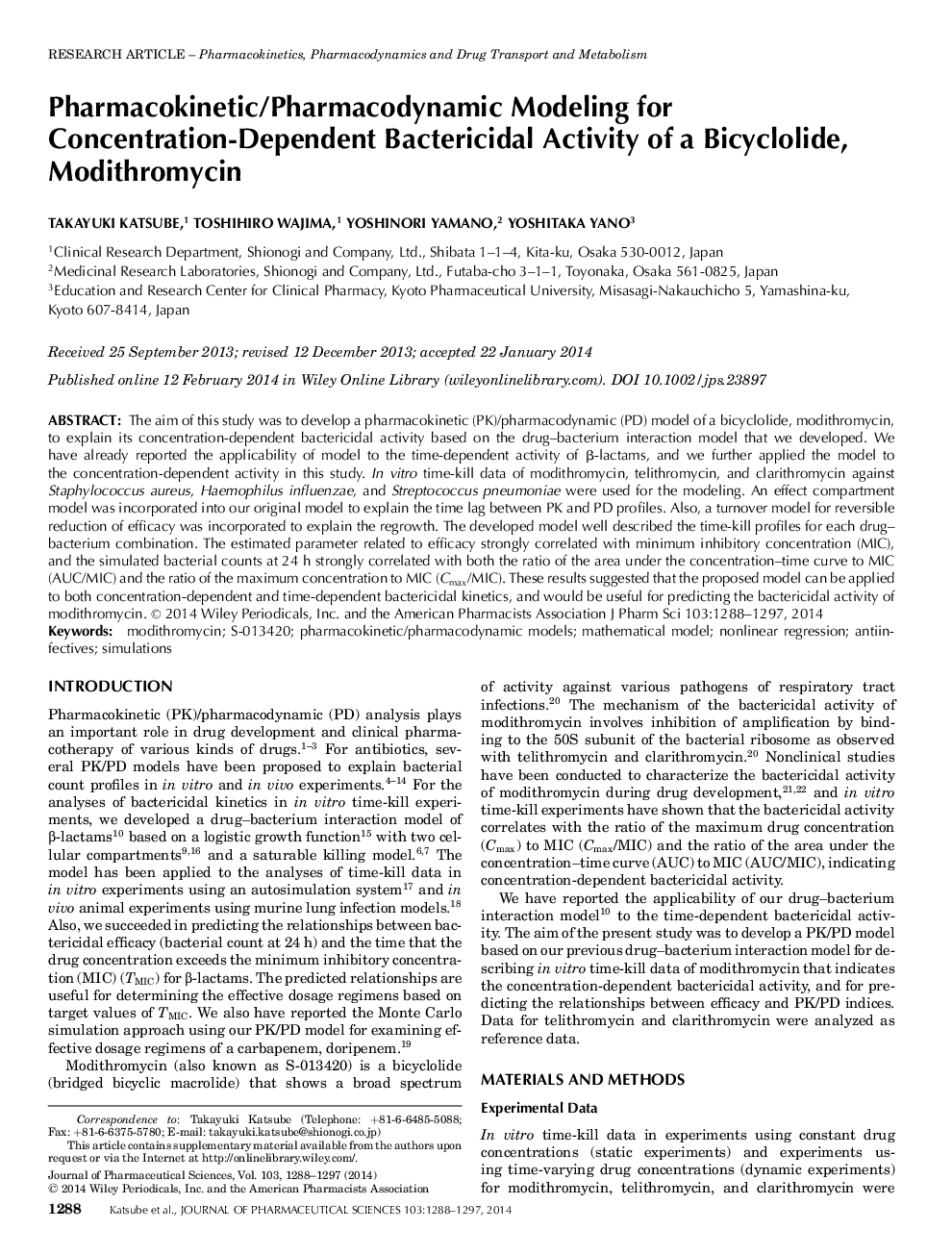| Article ID | Journal | Published Year | Pages | File Type |
|---|---|---|---|---|
| 10162401 | Journal of Pharmaceutical Sciences | 2014 | 10 Pages |
Abstract
The aim of this study was to develop a pharmacokinetic (PK)/pharmacodynamic (PD) model of a bicyclolide, modithromycin, to explain its concentration-dependent bactericidal activity based on the drug-bacterium interaction model that we developed. We have already reported the applicability of model to the time-dependent activity of β-lactams, and we further applied the model to the concentration-dependent activity in this study. In vitro time-kill data of modithromycin, telithromycin, and clarithromycin against Staphylococcus aureus, Haemophilus influenzae, and treptococcus pneumoniae were used for the modeling. An effect compartment model was incorporated into our original model to explain the time lag between PK and PD profiles. Also, a turnover model for reversible reduction of efficacy was incorporated to explain the regrowth. The developed model well described the time-kill profiles for each drug-bacterium combination. The estimated parameter related to efficacy strongly correlated with minimum inhibitory concentration (MIC), and the simulated bacterial counts at 24 h strongly correlated with both the ratio of the area under the concentration-time curve to MIC (AUC/MIC) and the ratio of the maximum concentration to MIC (Cmax/MIC). These results suggested that the proposed model can be applied to both concentration-dependent and time-dependent bactericidal kinetics, and would be useful for predicting the bactericidal activity of modithromycin. © 2014 Wiley Periodicals, Inc. and the American Pharmacists Association J Pharm Sci 103:1288-1297, 2014
Keywords
Related Topics
Health Sciences
Pharmacology, Toxicology and Pharmaceutical Science
Drug Discovery
Authors
Takayuki Katsube, Toshihiro Wajima, Yoshinori Yamano, Yoshitaka Yano,
